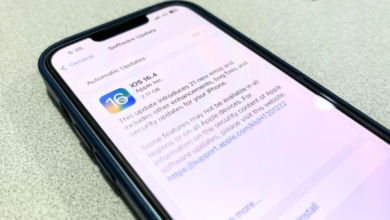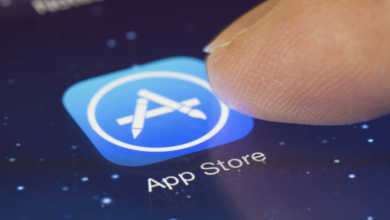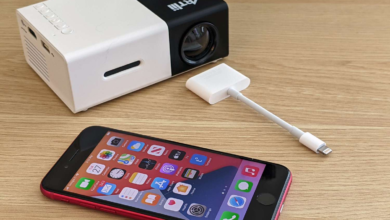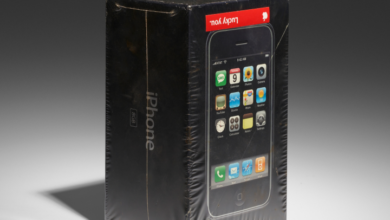Foldable Phones in the U.S.: A Growing Trend
Explore the rise of foldable phones in the USA. Discover top models, benefits, and future trends in flexible smartphone technology.

The smartphone industry is undergoing a revolutionary shift with the rise of foldable phones, a trend that is rapidly gaining traction in the U.S. market. These innovative devices, which feature flexible displays that can be folded or unfolded to switch between a compact phone and a larger tablet-like screen, are redefining user experience. Major tech giants like Samsung, Google, and Motorola have entered the foldable arena, pushing boundaries in design, durability, and functionality.
Despite their growing popularity, foldable phones still face challenges, including high costs, durability concerns, and limited app optimization. However, advancements in hinge mechanisms, display technology, and software integration are steadily addressing these issues. With more manufacturers joining the foldable race and prices expected to drop over time, these devices could soon dominate the U.S. smartphone market. As consumers increasingly seek versatility and premium features, foldable phones are poised to become a mainstream choice, signaling a new era in mobile technology.
Foldable Phones in the U.S. A Growing Trend
The Evolution of Foldable Phones
Foldable phones represent a significant leap in smartphone design, merging portability with expanded screen real estate. The concept of flexible displays has been in development for years, but it wasn’t until Samsung launched the Galaxy Fold in 2019 that foldable technology became commercially viable. Since then, the market has seen rapid improvements in durability, display quality, and user experience.
Early Concepts & Prototypes
The idea of foldable phones dates back to early concepts from tech companies and sci-fi inspirations. Before 2019, manufacturers experimented with flexible displays, but technological limitations in materials, hinges, and durability prevented mass production. Companies like Samsung and LG showcased prototypes, but these devices were not yet consumer-ready.
First Commercial Launch
Samsung made history in 2019 by launching the Galaxy Fold, the first commercially available foldable smartphone. Despite initial durability issues (screen cracking, hinge problems), it marked a major milestone. Competitors like Huawei (Mate X) and Motorola (Razr 2019) soon followed, each introducing different folding mechanisms inward, outward, and flip-style designs.
Refinement & Durability Improvements
After early setbacks, manufacturers focused on enhancing durability. Samsung introduced Ultra-Thin Glass (UTG) and stronger hinges in the Galaxy Z Fold 2 and Z Flip series. Water resistance, better multitasking software, and app optimizations improved usability. Companies also reduced visible creases and increased screen longevity, making foldables more reliable.
Mainstream Expansion & More Brands
By 2023, foldable phones gained wider acceptance, with more brands entering the market. Google launched the Pixel Fold, Oppo and OnePlus introduced their models, and Samsung solidified its lead with the Galaxy Z Fold 5 and Z Flip 5. Prices began to drop slightly, and foldables became more than just niche devices—appealing to professionals, gamers, and everyday users.
Future Innovations & Beyond
The next phase includes rollable screens, multi-fold designs, and lower-cost models to attract a broader audience. Companies are working on self-healing displays, under-screen cameras, and AI-driven software to enhance the foldable experience. As technology advances, foldable phones may eventually become the standard, replacing traditional slab-style smartphones.
Strong Adoption
The U.S. market, known for its strong adoption of cutting-edge technology, has embraced foldable phones with enthusiasm. Samsung’s Galaxy Z Fold and Z Flip series have been particularly successful, offering a blend of productivity and style. Google’s entry with the Pixel Fold further intensified competition, bringing seamless Android integration to the foldable segment.
Premium Experience
Another factor contributing to their popularity is the premium experience they offer. Foldable phones often come with high-end specifications, including top-tier processors, advanced cameras, and high-refresh-rate displays. For tech enthusiasts, these devices represent the pinnacle of innovation, making them a status symbol. Additionally, as manufacturers improve durability with stronger hinges and ultra-thin glass displays, consumer confidence in foldable technology continues to grow.
Why Foldable Phones Are Gaining Popularity
One of the key drivers behind the growing demand for foldable phones is their ability to combine the convenience of a smartphone with the utility of a tablet. Professionals and multitaskers appreciate the larger screen for productivity tasks like document editing, video conferencing, and split-screen apps. On the other hand, the compact form factor when folded makes them easy to carry, addressing one of the biggest drawbacks of traditional tablets.
Challenges Facing Foldable Phones
Despite their advantages, foldable phones are not without hurdles. The most significant barrier is their high price point, with flagship models often costing upwards of $1,500. This makes them inaccessible to a large segment of consumers who may prefer more affordable traditional smartphones. Additionally, concerns about long-term durability, particularly regarding the folding mechanism and screen creasing, persist.
Software Optimization
Software optimization is another challenge. Many apps are not yet fully optimized for foldable displays, leading to inconsistent performance when switching between folded and unfolded modes. However, Google and other developers are working closely with manufacturers to enhance app compatibility, ensuring a smoother experience. As these issues are addressed, foldable phones are likely to see broader adoption.
The Future of Foldable Phones in the U.S.
The future of foldable phones in the U.S. looks promising, with analysts predicting steady growth in the coming years. As competition increases, prices are expected to decrease, making these devices more accessible. Innovations like rollable displays and multi-fold designs are already in development, hinting at even more groundbreaking advancements.
Innovation in Form Factors
The next wave of foldable phones will experiment with rollable displays, dual-fold designs, and even stretchable screens, offering new levels of versatility. Software optimization will also improve, with Android fully embracing foldables through seamless multitasking and app continuity. As 5G and AI integration expand, foldables will become productivity powerhouses, bridging the gap between phones and tablets.
5G Connectivity
Moreover, as 5G connectivity becomes standard, foldable phones will benefit from faster speeds and improved cloud-based functionalities, further enhancing their appeal. With tech giants investing heavily in this segment, the U.S. market is set to witness a surge in foldable options, catering to diverse consumer needs.
Read More: How to Build a Secure Cloud Infrastructure for Your Business
Conclusion
Foldable phones in the U.S. are more than just a passing trend they represent the next evolution in smartphone technology. With their unique blend of portability and expansive displays, they cater to a growing demand for versatile, high-performance devices. While challenges like cost and durability remain, continuous advancements are steadily overcoming these barriers, making foldable phones a viable option for a wider audience.
As the market matures, we can expect more affordable and refined models, further accelerating adoption. The rise of foldable phones signals a transformative shift in the industry, where innovation meets practicality. For consumers willing to embrace this change, foldable phones offer a glimpse into the future of mobile technology one that is flexible, dynamic, and endlessly exciting.
FAQs
Are foldable phones durable?
Modern foldable phones use advanced materials like ultra-thin glass and reinforced hinges, improving durability, but long-term wear remains a consideration.
Why are foldable phones so expensive?
High production costs, cutting-edge display technology, and premium components contribute to their steep prices.
Do all apps work on foldable phones?
Most major apps are optimized, but some may not fully adapt to the folding screen, though developers are working on better compatibility.
Which brands offer foldable phones in the U.S.?
Samsung, Google, and Motorola are the leading brands, with others like OnePlus and Oppo expected to enter the market soon.
Will foldable phones replace traditional smartphones?
While they are gaining popularity, traditional smartphones will likely coexist with foldables due to affordability and familiarity











